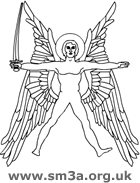Thanks to the generosity of the Robert Lucas Trust, our bell is being professionally restored as part of our Tower Restoration project.
The bell performs two key functions at St Michaels; the first is to give our clock a voice, chiming on the quarter, half and full hours (though this stops automatically between 10pm and 8am so as not to annoy our neighbours). The second is to allow us to announce the start of worship by pulling on a bell-rope in the entrance lobby.
Both of these functions involved a hammer being struck against the outside rim of the bell which has gradually worn the metal away, to a point that the bell was at risk of fracturing.
So, the bell is being restored, replacing the metal lost through the hammer-strikes over many years, and repairing the large chunk that you can clearly see is missing from the rim.
The work is being undertaken by John Taylor & Co at their Loughborough bell foundry - there is an inscription on the bell "R.Taylor St Neots Fecit 1808" (Fecit is Latin for 'made in'). Taylors bell foundry re-located from St Neots to Loughborough in 1839.
An excerpt from their website reads "[The Company] continues a line of bell founding which has been unbroken since the middle of the 14th Century [around the time that St Michael's Church was built we believe], when Johannes de Stafford was active only 10 miles from the site of the present foundry.
From 1784 the business was operated by members of the Taylor family, and in 1839 it moved to its present position in Loughborough, and is now proud to operate the largest bell foundry in the world."
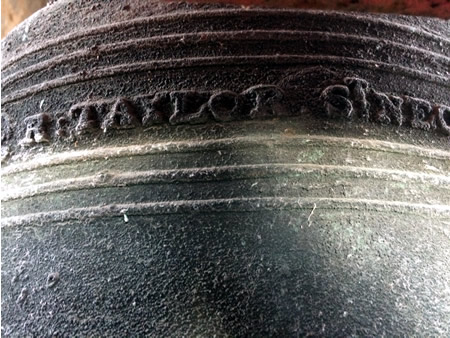
Another Inscription on the opposite side of the bell has the name of 'William Green Churchwarden'. We do not have any records of this period, so don't currently know if William Green was one of our Churchwardens or not, so this gives us another little research project to do!
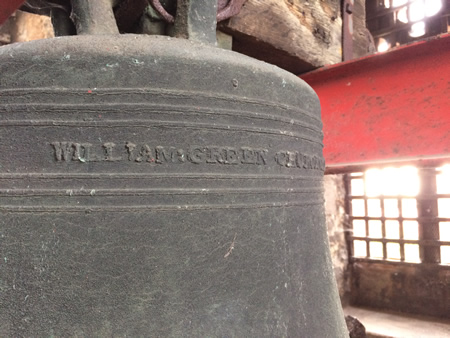
There is a cast iron hasp inside the top of the bell, from which the currently unused clapper hangs - as the bell is made from an alloy that is basically bronze, the joint between these two metals is a potential failure point, so the hasp may be removed as part of the restoration.
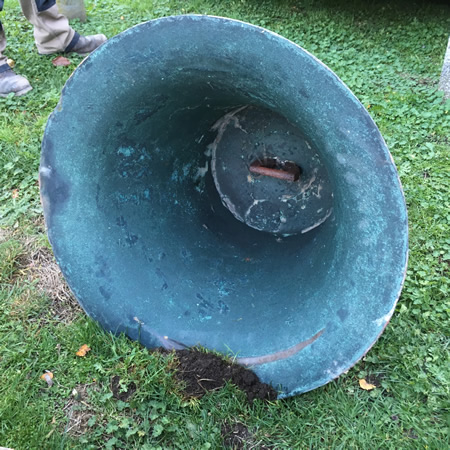
The bell was hung from two rolled steel joists which spanned the entire width of the bell/clock chamber, making it difficult to access the clock mechanism (positioned on the far side of the RSJs) for maintenance and adjustment. The plan now is to suspend the restored bell from a wooden bell frame which will allow easier and safer access to the clock mechanism, and may involve the original clapper coming back into use.
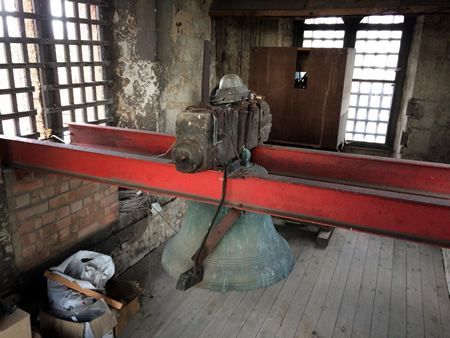
The first job was to remove the (currently unused) clapper from inside the bell.
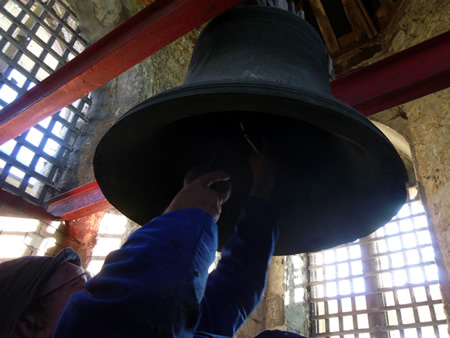
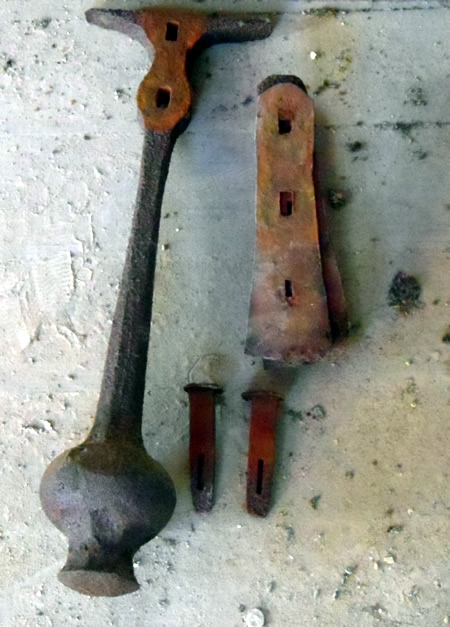
Next the bell and its headstock were lifted up from the supporting beams with a chain block (winch).
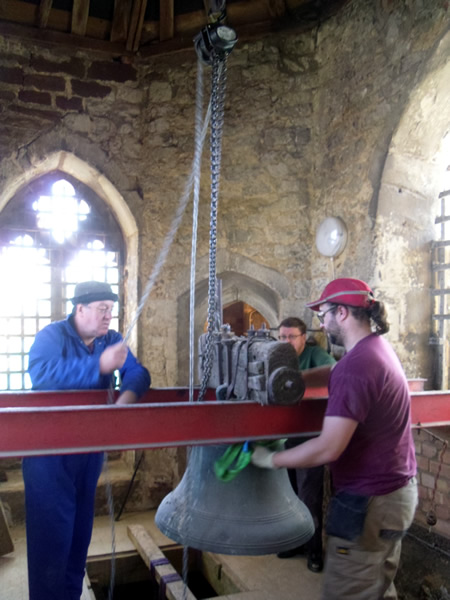
Once clear of the supporting beams, a second winch was used to pull the bell over the hatch in the floor of the bell chamber.
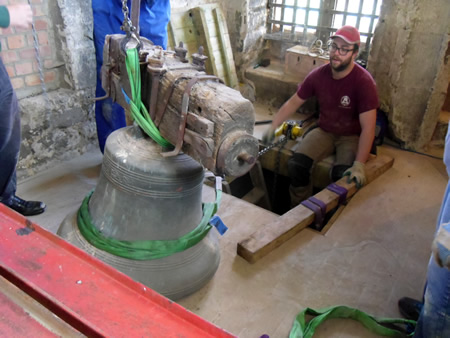
From there, the bell was winched all the way down to the ground - here's a short video of part of that happening...
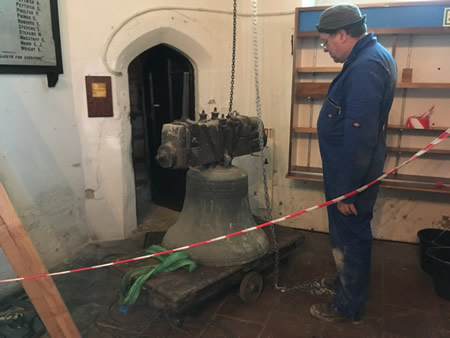
The bell was lowered onto a trolley so that it could be moved outside
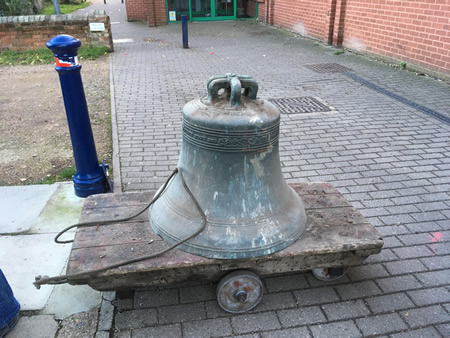
It was then wheeled around to the car park for loading into the van...
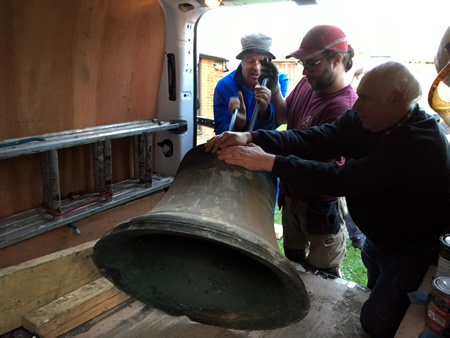
It took 3 guys to lift it into the van. You can clearly see a sizeable chip in the rim of the bell.
